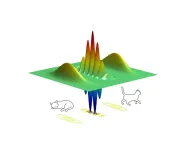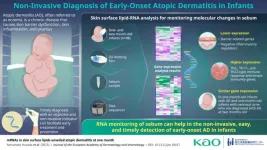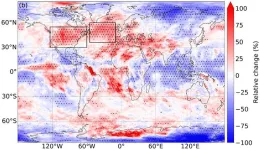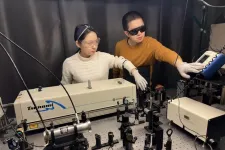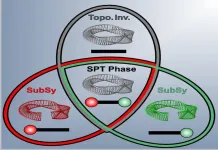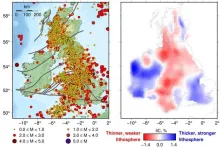(Press-News.org)
Quantum computing uses the principles of quantum mechanics to encode and elaborate data, meaning that it could one day solve computational problems that are intractable with current computers. While the latter work with bits, which represent either a 0 or a 1, quantum computers use quantum bits, or qubits – the fundamental units of quantum information.
“With applications ranging from drug discovery to optimization and simulations of complex biological systems and materials, quantum computing has the potential to reshape vast areas of science, industry, and society,” says Professor Vincenzo Savona, director of the Center for Quantum Science and Engineering at EPFL.
Unlike classical bits, qubits can exist in a “superposition” of both 0 and 1 states at the same time. This allows quantum computers to explore multiple solutions simultaneously, which could make them significantly faster in certain computational tasks. However, quantum systems are delicate and susceptible to errors caused by interactions with their environment.
“Developing strategies to either protect or qubits from this or to detect and correct errors once they have occurred is crucial for enabling the development of large-scale, fault-tolerant quantum computers,” says Savona. Together with EPFL physicists Luca Gravina, and Fabrizio Minganti, they have made a significant breakthrough by proposing a “critical Schrödinger cat code” for advanced resilience to errors. The study introduces a novel encoding scheme that could revolutionize the reliability of quantum computers.
What is a “critical Schrödinger cat code”?
In 1935, physicist Erwin Schrödinger proposed a thought experiment as a critique of the prevailing understanding of quantum mechanics at the time – the Copenhagen interpretation. In Schrödinger’s experiment, a cat is placed in a sealed box with a flask of poison and a radioactive source. If a single atom of the radioactive source decays, the radioactivity is detected by a Geiger counter, which then shatters the flask. The poison is released, killing the cat.
According to the Copenhagen view of quantum mechanics, if the atom is initially in superposition, the cat will inherit the same state and find itself in a superposition of alive and dead. “This state represents exactly the notion of a quantum bit, realized at the macroscopic scale,” says Savona.
In past years, scientists have drawn inspiration by Schrödinger’s cat to build an encoding technique called “Schrödinger’s cat code”. Here, the 0 and 1 states of the qubit are encoded onto two opposite phases of an oscillating electromagnetic field in a resonant cavity, similarly to the dead or alive states of the cat.
“Schrödinger cat codes have been realized in the past using two distinct approaches,” explains Savona. “One leverages anharmonic effects in the cavity, the other relying on carefully engineered cavity losses. In our work, we bridged the two by operating in an intermediate regime, combining the best of both worlds. Although previously believed to be unfruitful, this hybrid regime results in enhanced error suppression capabilities.” The core idea is to operate close to the critical point of a phase transition, which is what the ‘critical’ part of the critical cat code refers to.
The critical cat code has an additional advantage: it exhibits exceptional resistance to errors that result from random frequency shifts, which often pose significant challenges to operations involving multiple qubits. This solves a major problem and paves the way to the realization of devices with several mutually interacting qubits – the minimal requirement for building a quantum computer.
“We are taming the quantum cat,” says Savona. “By operating in a hybrid regime, we have developed a system that surpasses its predecessors, which represents a significant leap forward for cat qubits and quantum computing as a whole. The study is a milestone on the road towards building better quantum computers, and showcases EPFL’s dedication in advancing the field of quantum science and unlocking the true potential of quantum technologies.
Reference
Luca Gravina, Fabrizio Minganti, Vincenzo Savona. A critical Schrödinger cat qubit. Physical Review X Quantum 4, 020337. 07 June 2023. DOI: 10.1103/PRXQuantum.4.020337
END
Eczema is an inflammatory skin condition that often affects infants as young as one to two months. Among the various types of eczema seen in infants, early-onset atopic dermatitis (AD), characterized by psychological stress and sleep disorders, is particularly concerning. Studies have, in fact, identified that if left untreated, AD can increase the risk of allergic diseases such as food allergies and asthma—a progression also known as the “atopic march”. Early diagnosis and intervention of early-onset AD is needed to ensure the infant’s psychological and physical ...
The skies aircraft fly through are bumpier today than four decades ago, scientists have found, after producing a new analysis showing that turbulence has increased as the climate changed.
New research from the University of Reading shows that clear-air turbulence, which is invisible and hazardous to aircraft, has increased in various regions around the world.
At a typical point over the North Atlantic – one of the world’s busiest flight routes – the total ...
Washington, June 8, 2023—For years, parents looking for data to compare the academic quality of schools for their children had one primary measure to turn to: average student scores on standardized tests. However, these scores are often related to factors that have nothing to do with instructional quality—such as family income or racial and ethnic background—and push parents toward schools that are Whiter and more affluent, exacerbating school segregation in the U.S. As a result, many education ...
A University of Massachusetts Amherst public health researcher has updated and validated the widely used Pregnancy Physical Activity Questionnaire (PPAQ) to improve the measurement performance of this self-report physical activity method.
Lisa Chasan-Taber, professor and chair of biostatistics and epidemiology, and her research group used novel and innovative tools – an advanced accelerometer and wearable camera – to assess PPAQ performance. The researchers developed the PPAQ in 2004 as the first validated pregnancy physical activity questionnaire. Listed on the UMass Amherst timeline ...
A team led by University of Minnesota Twin Cities scientists and engineers discovered a new method for tuning the thermal conductivity of materials to control heat flow ”on the fly.” Their tuning range is the highest ever recorded among one-step processes in the field, and will open a door to developing more energy-efficient and durable electronic devices.
The researchers’ paper is published in Nature Communications, a peer-reviewed scientific journal covering the natural sciences.
Just as electrical ...
An international team led by researchers at Nankai University in China and at University of Zagreb in Croatia, along with team at the Institut national de la recherche scientifique (INRS) in Canada, led by Roberto Morandotti has made an important breakthrough in the study of topological phases. Their findings were recently published in Nature Physics – a journal published by Nature Publishing Group.
In the last decade, topological photonics has attracted increasing attention due to the unique prospects to achieve light manipulation with high performance in terms of robustness and stability. Discoveries in topological photonics ...
Statement Highlights:
A new American Heart Association scientific statement focuses on treatment strategies for pediatric cardiomyopathy (diseases of the heart muscle’s structure and function that may lead to heart failure and death) and is a companion to a 2019 scientific statement focused on diagnosis of the condition.
There are several types of cardiomyopathies in children, and treatment should include personalized therapies based on the root cause, symptoms and progression of the condition in each child, according to the new scientific statement.
Embargoed until 4 a.m. CT/5 a.m. ET, Thursday, June 8, 2023
DALLAS, June 8, 2023 — Treating ...
Researchers from the University of Cambridge and the Dublin Institute for Advanced Studies have discovered that variations in the thickness of tectonic plates relate directly to the distribution of earthquakes in Britain, Ireland and around the world.
The study also solves an enduring mystery as to why small earthquakes happen frequently in Britain but are almost completely absent from neighbouring Ireland.
The researchers produced a computer-generated image of Earth’s interior using a technique called seismic tomography, which works in a similar way to a medical CT scan. The data they collected revealed variations in the thickness of the ...
University of Leeds Press Release
Under embargo until 09.00 am (British Summer Time) on Thursday, June 8
**With details of a linked press conference at the UNFCC meeting in Bonn - see under notes to journalists**
Greenhouse gas emissions at ‘an all-time high’ - and it is causing an unprecedented rate of global warming, say scientists
Human-induced ...
University of Birmingham spinout Linear Diagnostics has received funding to finesse a point-of-care test for rapid diagnosis of gonorrhoea and Chlamydia in men who have sex with men (MSM), and women who have sex with women (WSW).
The funding from the National Institute of Health and Social Care Research (NIHR) will cover essential work to optimise and validate Linear’s platform technology (LDx-CTNG), so it can diagnose infection from rectal and pharyngeal (throat) swabs.
Gonorrhoea and Chlamydia are both major public health concerns. While Chlamydia remains the most commonly detected sexually ...
